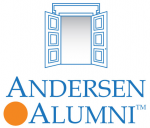Information Overload Plagues Employees. Is the Modern Workplace to Blame?
By Larry English, Andersen Alumnus and currently CEO of Centric Consulting.
We all know the feeling. You’ve got a long list of work to complete, yet
a constant stream of emails, chats, task notifications, and meetings prevents
you from getting anything done. The information overload not only impacts your
ability to cross things off your list, but it’s also a serious mental drain.
The 2023 Microsoft Work Trend Index found
information overload a common problem among modern workers. Sixty-eight percent
of survey participants said they lack uninterrupted focus time throughout the
day, and sixty-two percent say searching for information eats up valuable time
every day.
And it’s not only individual workers who suffer. Information overload
is a huge negative for organizations, too, leading to a degraded culture, as
well as problems recruiting and retaining top talent. “We spend more and more
of our days separating the signal from the noise–at the expense of creativity,”
states the Microsoft report. “And the tax on individual productivity is
compounding, undermining organizational productivity and global GDP.”
Part one of this series on information overwhelm explores the aspects
of the modern workplace that contribute to information overwhelm. Part two will
provide a roadmap for reducing information overload.
How does the modern workplace contribute to information overload? Let’s
dive in:
1. Remote
Work/Hybrid Work
My company, Centric Consulting, has
been remote-first for over two decades. Needless to say, I’m a big proponent of
remote work and all the benefits it offers individual employees and
organizations alike. That said, the COVID-19 pandemic caused many organizations
to go remote by default rather than design, setting organizations up for
failure when it comes to information overload.
“Companies wanted to keep their leaders and team members engaged, so
many of these companies’ communications increased significantly,” says Michael
McNett, co-lead of Centric’s
Modern Workplace practice.
“The impact was a large volume of communications becoming the standard, and as
we’ve evolved from the pandemic, similar situations are happening as companies
figure out how to work with a hybrid workforce, with some people working in-person
while others work remotely.”
Now, all companies — in office or not — use remote or hybrid
technologies. As a result, employees are always “on.”
The solution: Have a strategy behind your remote or hybrid workplace
processes. Simply letting people work remotely some or all of the time and
burying them in inefficient communications is a recipe for disaster. And if
your company has returned to the office, you still need to consider how you’re
using remote communication tools.
2. New
Technology
Modern workplace tools and automated processes promise increased
efficiency and collaboration. But, many organizations fail to implement these
tools and processes correctly, leading to information overload.
“Many times, companies implement these changes without adhering to best
practices to reduce information overload,” McNett explains. “In the early days
of the pandemic, companies turned on applications such as Microsoft Teams
without adequate training and communications. The end users were suddenly
inundated with a completely new and different communications path, which they
didn’t know how to manage and configure to best meet their personal
preferences.”
To compound the problem, companies often don’t establish guidelines for
when to use what mode of communication — email versus meeting versus phone call
versus chat — causing organization-wide frustration, missed communications, and
chronic duplicate communications.
The solution: Put an adoption and change management program
in place to cover key areas such as communications, training, success
measurement, and resistance management.
3. Too Much
New Technology
After adding new technology to their stack, some companies still have
employees continuing to use traditional communication and collaboration
systems. Not only have they not communicated about when to use what technology,
but they’re also reluctant to get rid of old or outdated systems and merely
layer new technology on top. This is commonly known as “shadow IT,” or adding new
technology without going through proper IT governance and validation processes,
which causes employee confusion and frustration in addition to information
overload.
For instance, say a CEO loves Zoom, but the company has recently
integrated Microsoft 365. So now the company uses Zoom for external calls and
Teams for internal meetings. In addition, they’ve kept Slack because the IT
team prefers Slack, and they don’t want to force anyone into using a tool they
don’t love. “So now they have all these duplicate systems,” McNett says. “If
the company isn’t forced into consolidating these applications to increase ROI
and decrease outgoing costs, they’re just going to continue contributing to
information overload.”
The solution: Do the hard work of eliminating, reducing and
consolidating applications.
Information
Overload Will Only Get Worse
As technology continues to evolve and we have more ways to communicate
more efficiently, information overload will only become a more serious problem.
Leaders must address it now.
“It’s only getting worse, but it’s forcing leadership to prioritize
finding solutions,” says Karina Myers, co-lead of Centric’s Modern Workplace
practice. “Conversations have switched from ‘we want to have the tools
available’ to ‘how do we make those tools work.’ Companies are realizing
they’re going to lose talent or not be able to attract new talent.”
Bottom line: Modernizing the employee experience — the right way — is
the most direct path to attracting and retaining highly engaged talent. Centric
Consulting’s team of Modern Workplace experts can help.
Contact us to learn more and get started.
Centric Consulting is an international management consulting firm with unmatched in-house expertise in business transformation, hybrid workplace strategy, technology implementation and adoption. Founded in 1999 with a remote workforce, Centric has established a reputation for solving its clients’ toughest problems, delivering tailored solutions, and bringing deeply experienced consultants centered on what’s best for your business.
